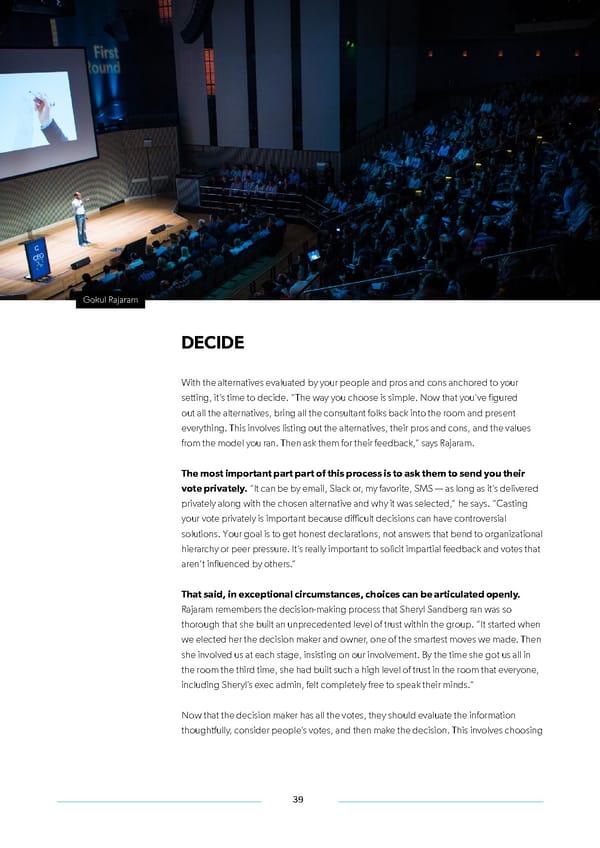ESSENTIALS MANAGEMENT Gokul Rajaram DECIDE With the alternatives evaluated by your people and pros and cons anchored to your setting, it’s time to decide. “The way you choose is simple. Now that you’ve ifgured out all the alternatives, bring all the consultant folks back into the room and present everything. This involves listing out the alternatives, their pros and cons, and the values from the model you ran. Then ask them for their feedback,” says Rajaram. The most important part part of this process is to ask them to send you their vote privately. “It can be by email, Slack or, my favorite, SMS — as long as it’s delivered privately along with the chosen alternative and why it was selected,” he says. “Casting your vote privately is important because diiffcult decisions can have controversial solutions. Your goal is to get honest declarations, not answers that bend to organizational hierarchy or peer pressure. It’s really important to solicit impartial feedback and votes that aren’t inlfuenced by others.” That said, in exceptional circumstances, choices can be articulated openly. Rajaram remembers the decision-making process that Sheryl Sandberg ran was so thorough that she built an unprecedented level of trust within the group. “It started when we elected her the decision maker and owner, one of the smartest moves we made. Then she involved us at each stage, insisting on our involvement. By the time she got us all in the room the third time, she had built such a high level of trust in the room that everyone, including Sheryl’s exec admin, felt completely free to speak their minds.” Now that the decision maker has all the votes, they should evaluate the information thoughtfully, consider people’s votes, and then make the decision. This involves choosing 39
 Essentials Management First Round Capital Page 38 Page 40
Essentials Management First Round Capital Page 38 Page 40